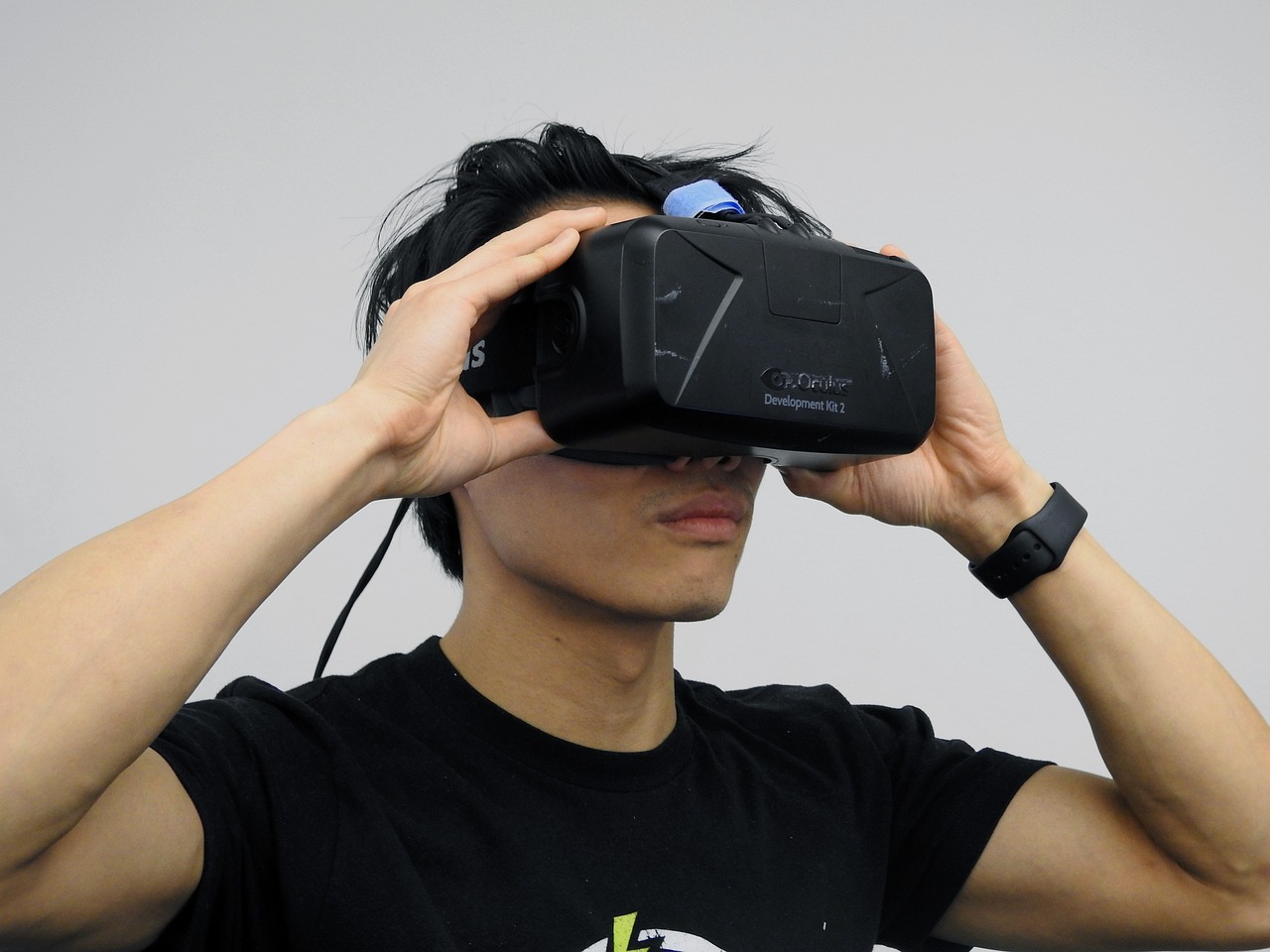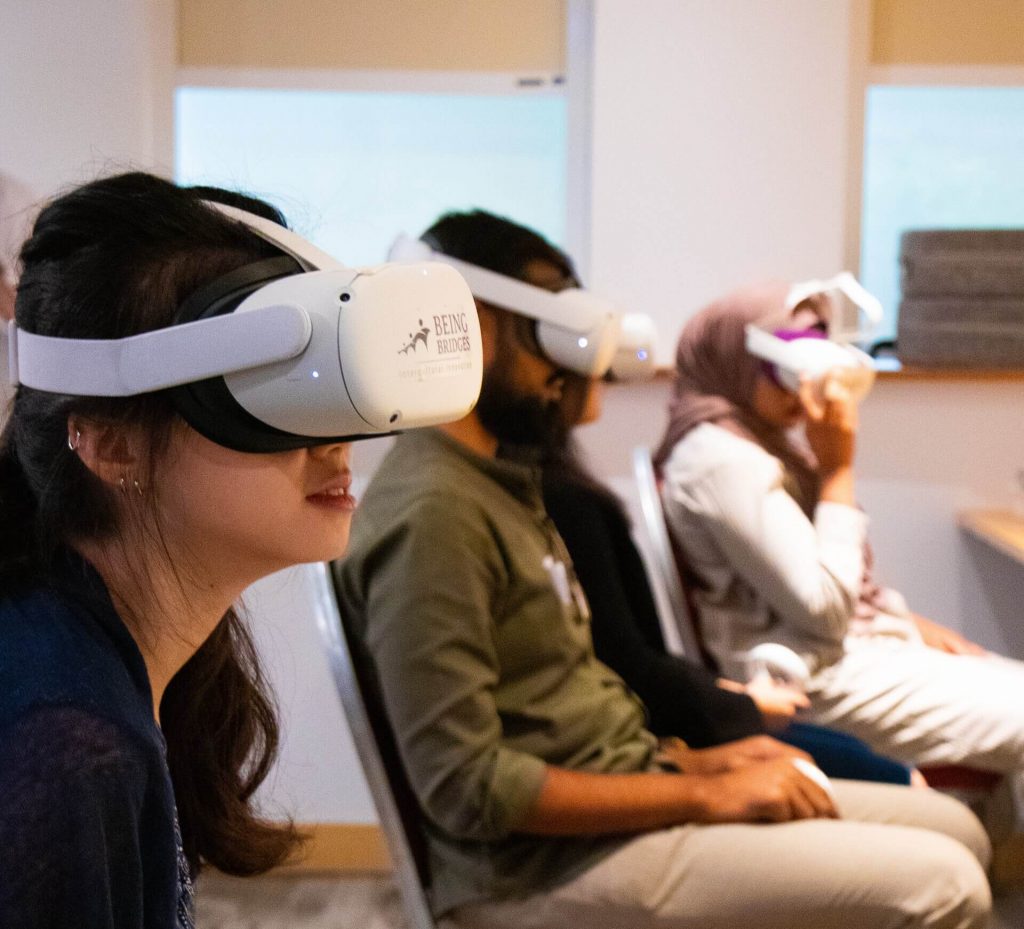Extended Reality as Pedagogical Tool
01 February 2024
By Fang Yihang

01 February 2024
By Fang Yihang
Extended reality (XR) technologies are challenging and transforming conventional notions of what constitutes ‘learning environments’ in educational and training contexts. In 2017, the Ministry of Education (MOE) in Singapore piloted the use of virtual reality (VR) in Social Studies lessons in schools, with the aim of allowing students to ‘visit’ field sites in Singapore — such as historical buildings and high-tech urban farms — without physically leaving the classroom. Apart from enabling immersive virtual field visits, however, the pedagogical uses of such technologies are diverse, as VR and XR technologies can be utilised for a wide range of learning outcomes across various domains.
XR is a term that broadly refers to technologies such as VR and augmented reality (AR), which either immerse users in virtual environments or blend real and virtual environments respectively. VR offers the user full (360 degree) immersion in the virtual environment, often with the use of devices such as head-mounted displays (HMD) and Cave Automatic Virtual Environments (CAVE). In the latter case, projectors are directed onto the walls of cube-shaped rooms to produce an immersive VR environment. In contrast, AR usually involves a blending of elements from both real and virtual environments — a technology that would be familiar to players of the immensely popular 2016 smartphone game Pokémon Go.
Over the last decade or so, there has been a rapid increase in interest in XR technologies across various domains. In particular, XR technologies have increasingly been harnessed by educators and trainers as pedagogical tools in a variety of contexts, with the aim of giving learners the opportunity for active and experiential learning. The use of XR technologies as a pedagogical tool for professional training has often been in disciplines such as healthcare and STEM, with the aim of developing the cognitive abilities of learners. Such pedagogical innovations have demonstrated the ability to improve the problem solving and critical thinking abilities of learners, through greater active engagement in learning activities afforded by XR. Indeed, research has shown that compared to conventional and less immersive pedagogical methods such as slide shows, VR technologies can be more effective in developing cognitive understandings of content knowledge in disciplines such as the sciences, engineering, and medicine.

To a lesser extent, XR has also been applied as a teaching and learning tool for the development of soft skills. In the United States, researchers at Purdue University have piloted the use of VR simulations to improve workplace soft skills among STEM students, by ‘placing’ students in intercultural leadership situations. Indeed, there is much scope for XR technologies to be used as pedagogical tools for the developing of intercultural sensitivity and intergroup understanding. Specifically, perspective-taking through VR might enhance users’ empathy towards those who are different from them. In Singapore, researchers at the Nanyang Technological University have examined the efficacy of VR in promoting empathy and pro-social behaviour in the context of kidney donation. Participants who used VR to take the perspective of a typical organ-failure patient were found to experience empathy and greater intention to become organ donors. Additionally, other participants who embodied themselves in the VR experiment were able to imagine themselves in the same situation as their avatar, which motivated them to engage in behaviours such as monetary donation and volunteering.
Perspective-taking through VR can also be used to encourage greater understanding and empathy between different racial groups. In the United States, for example, 1,000 Cut Journey is an immersive VR experience that allows participants to take the embodied perspective of an avatar encountering everyday forms of racism, funded by the Brown Institute for Media Innovation and developed as a collaboration between researchers at Stanford University’s Virtual Human Interaction Lab and Columbia University’s Cogburn Research Group. The project aims to examine how the immersive virtual environment affects not only the physiological but also psychological processes of participants such as empathy, racial bias, and decision making. In a similar project in Canada, experimental psychologists also used VR to allow participants to ‘swap bodies’ with a Black person, which had the effect of increasing participants’ empathy towards outgroup members. In contrast, in this study, other less immersive methods of perspective taking — such as by simply inviting participants to imagine life as a racial minority — were significantly less effective in eliciting empathy. Overall, research in social psychology has revealed how ‘walking’ in the shoes of others using VR is a promising strategy to increase empathy for outgroups.
VR can used to engender greater intercultural understanding, but potentially through other methods apart from perspective-taking. For example, VR can be utilised as a pedagogical tool to allow students learning about religion and religious traditions to immerse themselves in ritual practices — which can be a much more powerful experience than merely reading from a page or watching a video. Such learning experiences have been made possible through various VR projects, such as Zikr: A Sufi Revival and MUYA: The Multimedia Yasna Project. These VR projects can serve as substitutes for site visits in academic courses about religion and religious practices, as they allow for an immersive experience without the risk of disrupting actual, ongoing rituals on-site. Given that, in Singapore, the MOE has already piloted the use of VR to visit historical landmarks in the country as part of Social Studies lessons for primary school students, it is not difficult to imagine that VR projects like Zikr and MUYA can be extended to include learning about religious practices in Singapore and the Southeast Asian region.
Of course, it is important not to overstate the potentials of XR technologies in enhancing learning outcomes. Many research and pedagogical experimentations with XR, such as the ones outlined above, are still in their pilot stages, or may only involve short-term or once-off interventions. It is also important to develop rigorous and reliable methods to evaluate learning outcomes in order to assess the pedagogical effectiveness of XR. Indeed, some studies have shown that perspective-taking using VR does not invariably lead to increased levels of empathy and altruism towards marginalised or vulnerable groups. Nevertheless, the existing research is promising, and the potential to improve intergroup cohesion through the use of VR as a perspective-taking tool should continue to be explored.